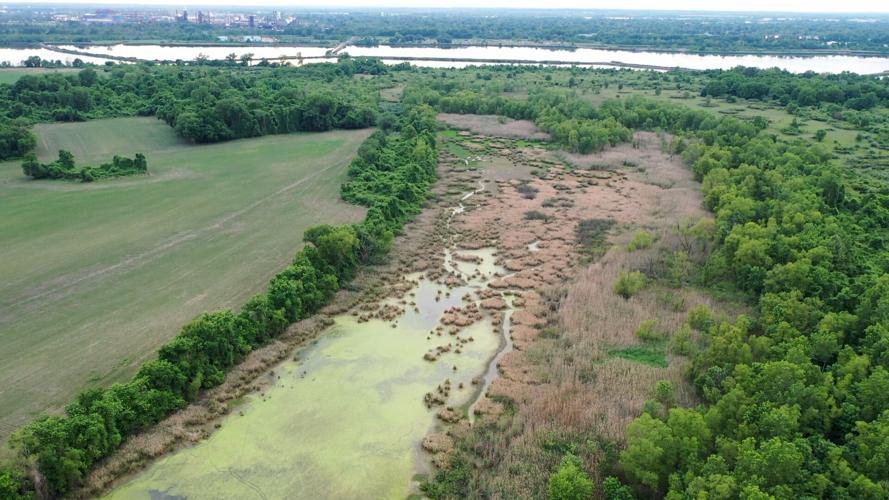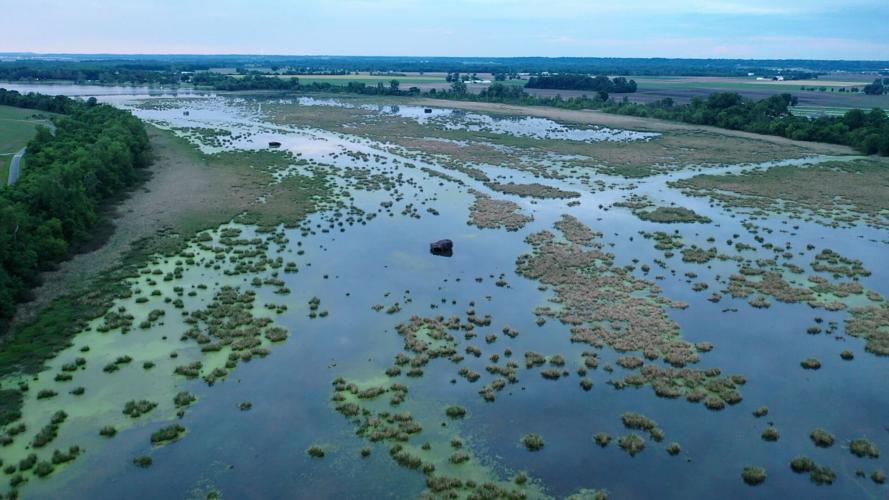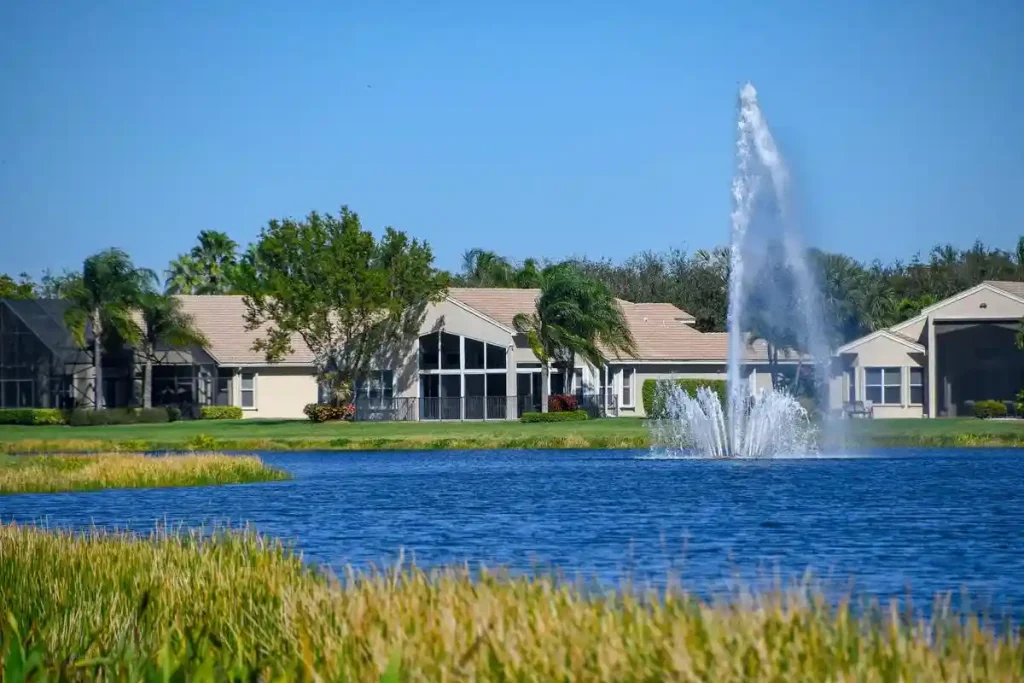Welcome to the wonderful world of wetland management in Lake Saint Louis. Nestled in the heart of Missouri, this region is home to some truly remarkable wetlands that play a crucial role in our ecosystem. These wetlands are more than just a pretty sight; they’re essential for maintaining water quality, supporting diverse wildlife, and even mitigating flooding. In the face of urbanization and climate change, it’s become increasingly important to manage and protect these delicate ecosystems. Join us on a journey as Rightway forestry will explore the challenges and solutions to sustainably manage the wetlands of Lake Saint Louis, ensuring a brighter and greener future.
Importance of Wetlands:
Wetlands, those soggy, marshy areas often overlooked, are actually incredibly important for our environment and well-being. Picture them as nature’s multitaskers. First and foremost, they’re like nature’s water filters. They absorb excess rainwater, preventing floods and acting as a sponge during heavy storms. But that’s not all – wetlands also improve water quality by trapping pollutants and sediments. Plus, they’re biodiversity hotspots, offering homes and breeding grounds for countless species of plants, birds, and aquatic creatures. Beyond that, they’re helping combat climate change by storing carbon. So, whether you’re a fan of clean water, wildlife, or mitigating floods and climate impacts, wetlands have your back. They’re truly unsung heroes in our natural world
Biodiversity Hub:
Think of wetlands as bustling hubs for biodiversity, like the vibrant heart of a thriving city. These watery wonderlands are teeming with life, from the tiniest microorganisms to majestic waterfowl. They provide essential habitats for a dazzling array of flora and fauna, offering safe spaces to feed, nest, and grow. You’ll find unique plant species adapted to soggy soils, amphibians croaking in chorus, and migratory birds making pit stops during their long journeys. Wetlands also serve as nurseries for fish, ensuring future generations of aquatic life. Through careful land management services in places like Lake Saint Louis, we’re not just protecting a few species; we’re safeguarding entire ecosystems and ensuring the rich tapestry of life continues to flourish.
Urban Expansion Challenges:
As our cities expand and grow, they often encroach upon the delicate ecosystems of wetlands, presenting a challenge that’s hard to ignore. The lure of development can bring pollution, habitat destruction, and altered water flow patterns that put stress on these natural gems. In places like Lake Saint Louis, where urbanization is on the rise, finding a balance between growth and conservation becomes crucial. It’s a bit like a tightrope walk, where we must consider the long-term health of wetlands while meeting the demands of a growing population. The key lies in smart urban planning that respects and protects these vital ecosystems, ensuring that they continue to thrive amidst the concrete jungle.

Water Quality:
Let’s talk about water quality, and guess what? Wetlands play a starring role in keeping our water clean and pristine. Think of them as nature’s own water purifiers. When rainwater runs off roads and rooftops, it can pick up all sorts of pollutants, from chemicals to sediment. But wetlands act as natural filters, grabbing hold of these nasties and preventing them from reaching our lakes and rivers. It’s like having a giant, green sponge that soaks up the bad stuff. So, when we protect and maintain wetlands, we’re not only ensuring a healthy habitat for wildlife but also a source of clean water for us humans. It’s a win-win for both nature and our well-being.
Flood Mitigation:
When it comes to flood mitigation, wetlands are like Mother Nature’s flood insurance policy. These amazing ecosystems have a knack for soaking up excess water during heavy rains and acting as a buffer against floods. Imagine them as giant sponges that can expand when needed. As rainwater pours in, wetlands absorb it, preventing it from rushing downstream and causing havoc in urban areas. In places like Lake Saint Louis, where heavy rains can be a concern, these natural flood control systems, combined with the social benefits of land restoration, are priceless. By protecting and preserving wetlands, we’re not just safeguarding our homes from flooding but also nurturing a healthier and more resilient environment. It’s a win-win for both nature and our communities.
Community Involvement:
Community involvement is the secret sauce for successful wetland management. These ecosystems aren’t just a concern for scientists and environmentalists; they affect all of us. When local residents and organizations get in on the action, amazing things can happen. It’s like a team effort where everyone plays a role. Whether it’s organizing clean-up days, participating in wetland restoration projects, or simply spreading awareness about their importance, every contribution counts. When people feel a personal connection to their local wetlands, they’re more likely to take steps to protect them. So, in places like Lake Saint Louis, rallying the community to care for these precious natural spaces is a recipe for success, ensuring that wetlands continue to thrive for generations to come.

Monitoring and Restoration:
Monitoring and restoration efforts are like the life support system for wetlands. Imagine them as check-ups and healing treatments. Regular monitoring involves keeping a close eye on the health of these ecosystems. We measure water quality, observe wildlife populations, and track changes in vegetation to ensure everything’s in balance. And when issues arise, like invasive species taking over or pollution creeping in, restoration steps in. It’s like rehab for wetlands. Restoration projects involve removing invasive species, replanting native plants, and fixing drainage problems. These actions help rejuvenate the wetland, ensuring it remains a vibrant and thriving part of the local environment. So, in places like Lake Saint Louis, ongoing monitoring and restoration efforts are the keys to keeping wetlands in tip-top shape for nature and us to enjoy.
Climate Resilience:
Climate resilience is another superpower in wetlands’ repertoire. These incredible ecosystems act as natural climate change warriors with the added support of professional land management. How do they do it? Well, they store carbon like a green bank, locking away harmful greenhouse gases that contribute to global warming. Plus, wetlands are champions at adapting to changing conditions. When sea levels rise or extreme weather strikes, they serve as a buffer, absorbing the impact and reducing the damage to nearby communities. So, in an era where climate change is a pressing issue, preserving and protecting wetlands, like those in Lake Saint Louis, isn’t just about conservation; it’s a smart strategy for building resilience in the face of our changing world.
Policy and Regulation:
Ah, policies and regulations, the backbone of wetland protection! These rules are like the referees in a game, making sure everyone plays fair and the wetlands stay safe. In places like Lake Saint Louis, local and state governments set the rules that guide how wetlands are managed and preserved. They might limit what you can build near wetlands, regulate pollutant discharges, or require permits for certain activities. It’s all about finding that delicate balance between development and conservation. Effective policies and regulations ensure that wetlands continue to thrive, benefiting both the environment and the community. So, while they might seem a bit bureaucratic, they’re essential in the grand scheme of wetland protection and sustainability.
Collaborative Efforts:
Collaboration is like the secret sauce that makes wetland management and understanding the land management process truly successful. It’s all about teamwork between government agencies, non-profit organizations, and concerned citizens. Imagine everyone in a big circle, each playing a crucial role. Government agencies set the rules and provide resources, non-profits bring expertise and funding, and citizens bring their passion and local knowledge. Together, they form a united front to protect and preserve wetlands, like those in Lake Saint Louis. Whether it’s restoring wetland habitats, monitoring water quality, or advocating for policy changes, collaborative efforts ensure that everyone’s voices are heard and that these vital ecosystems continue to flourish. So, when it comes to wetland conservation and understanding the land management process, it’s all hands on deck, and that’s what makes it work!

FAQ’S:
How do you manage wetlands?
Managing wetlands involves a combination of conservation efforts, including monitoring water quality, restoring habitats, regulating land use, and fostering community engagement to protect these valuable ecosystems.
Which is the best conservation measure to protect the wetlands?
There’s no one-size-fits-all answer, but a key conservation measure is maintaining water quality through pollution control and minimizing urban development in wetland areas.
What are the positive impacts of the wetlands in Missouri?
Wetlands in Missouri provide numerous positive impacts, including flood mitigation, improved water quality, habitat for diverse wildlife, and support for recreational activities.
What are 3 negative impacts of human activities on wetlands?
Three negative impacts of human activities on wetlands include habitat destruction through urban development, pollution from agricultural runoff, and invasive species introduction.
What are the 4 different names of wetlands?
Wetlands can be referred to as marshes, swamps, bogs, and fens, depending on their characteristics and vegetation.
CONCLUSION:
In conclusion, managing wetlands in Lake Saint Louis is a multifaceted endeavor that requires a collective commitment from the community, government agencies, and conservation organizations. Preserving these vital ecosystems offers a range of benefits, from ensuring clean water and flood mitigation to supporting biodiversity and climate resilience. By embracing sustainable practices, sound policies, and collaborative efforts, we can protect and nurture these natural treasures for current and future generations, fostering a harmonious coexistence between urban expansion and environmental conservation in Lake Saint Louis.

